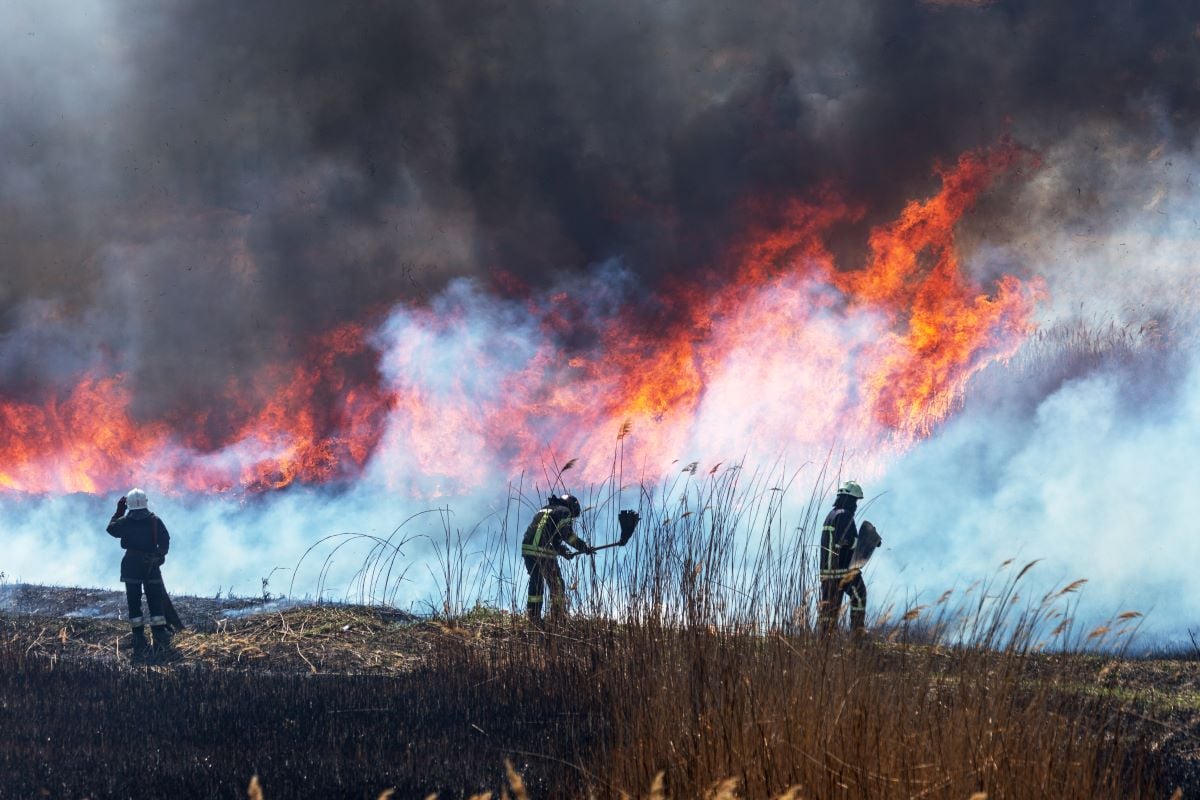
Wildfires that spread so fast they outrun the efforts of fire crews trying to contain them: These types of conflagrations are becoming far more common across the Western United States, a new study warns.
A fire’s velocity could be even more important than its size when it comes to the threat to people and property, researchers say.
“We hear a lot about megafires because of their size, but if we want to protect our homes and communities, we really need to appreciate and prepare for how fast fires move,” said study lead author Jennifer Balch.
“Speed matters more for keeping people safe,” said Balch, an associate professor of geography at the University of Colorado Boulder.
Her team published its findings Oct. 24 in the journal Science.
The new study was inspired by the Marshall Fire that burned more than 1,000 homes in Boulder County, Col., in December of 2021. It wasn’t gargantuan in size — about 6,100 square acres when it was over — but high winds and dry conditions meant it raced ahead of fire crews.
It only took the Marshall Fire less than a hour to leap to a town 3 miles away, prompting the immediate evacuation of over 10,000 residents, the research team noted.
It’s not even the worst such fire on record.
In 2018, the Camp Fire took advantage of winds and bone-dry conditions to quickly race through and destroy the California town of Paradise. It burned over 150,000 square acres, forced the evacuation of 52,000 people, and destroyed over 18,000 structures. It also killed 85 people who could not get out in time.
Such cataclysmic events may be on the rise, the new study found.
Balch’s team sourced satellite data to track the growth rates of over 60,000 fires in the contiguous U.S. from 2001-2020.
“Until now, we had scattered information about fire speed,” study co-author Virginia Iglesias, interim director of the Earth Lab at the university, explained. “We harnessed Earth observations and remote sensing data to learn about fire growth across the nation in a systematic manner.”
The team focused on the fastest fires — those that expanded by more than 4,000 acres per day.
They found that these “fast fires” have increased by more than 250% over the past two decades across the Western United States.
Speed makes fires much more deadly and destructive, the research showed.
Fast fires were responsible for 88 percent of all homes destroyed between 2001 and 2020, Balch’s team found, even though they represented less than 3% of fires recorded during that time.
Fires that led to the destruction of 100 or more structures typically had growth rates of 21,000 acres or more per day, the study also found.
“These results change how we think about wildfire risk because they position growth rate as a key determinant of a fire’s destructive potential,” Iglesias said in a university news release.
Armed with this new knowledge, “we need to focus on what we can do to prepare communities: hardening homes and making robust evacuation plans” to cope with fast-spreading fires, Balch said.
Right now, most government agencies and insurance companies don’t include wildfire velocities in their risk models, the researchers noted.
However, “when it comes to safeguarding infrastructure and orchestrating efficient evacuations, the speed of a fire’s growth is arguably more critical than its sheer size,” Iglesias said.
More information
There are tips on safeguarding your family and your home from wildfires at the Federal Emergency Management Agency (FEMA).
SOURCE: University of Colorado Boulder, news release, Oct. 24, 2024
Source: HealthDay
Copyright © 2024 HealthDay. All rights reserved.

Leave a Reply